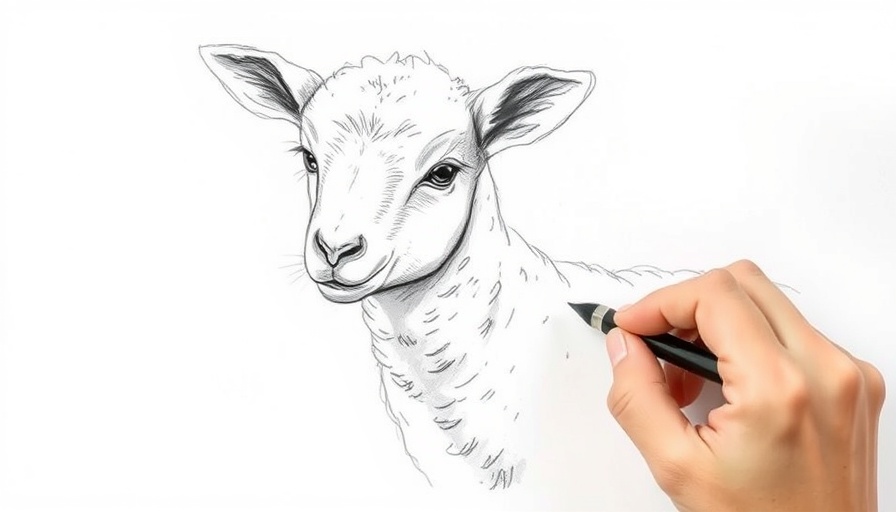
The Powerful Symbolism of Passover
Passover, or "Pesakh" in Hebrew, is more than just an annual commemoration; it is a vivid reminder of God's protective love. The imagery of a mother bird shielding her chicks is powerful and resonates deeply. This concept draws from the deeper understanding of the word "pasakh," which embodies the essence of protection. In the face of peril, it represents how God stands guard over His people, ensuring their safety during times of trouble.
In 'Passover: What It Means and Why It’s Celebrated Every Year,' the discussion dives into the rich history and meaning behind Passover, exploring key insights that sparked deeper analysis on our end.
Historical Context: The Birth of Passover
Understanding the history behind Passover is crucial to grasping its significance today. This festival originates from the dire circumstances of the Israelites in Egypt. Facing the tyranny of Pharaoh, who cruelly ordered the death of every Hebrew male infant, they were trapped in a cycle of suffering. God intervened through Moses, delivering them from bondage by sending ten plagues. The last plague, the death of the firstborn, was a direct attack on Pharaoh’s cruelty. By instructing the Israelites to mark their doorposts with lamb's blood, God provided a means of protection. This act not only spared their lives but also established the foundational story of the Jewish faith, commemorated by Passover.
The Meaning Behind "Pasakh"
The verb "pasakh" is fascinating because it connects both the protective and the transformative power of God. When the Israelites followed God's command, it wasn't just about escaping judgment; it was a radical act of faith. This duality of the term underscores a broader question: How do we find protection in our lives today? Just as God pasakhed over the Israelites, believers are invited to seek refuge in His love and guidance when faced with adversity. The act of marking the doorframe becomes a metaphor for making conscious choices to embody divine protection in our daily lives.
Celebrating Passover Today
Communities maintaining the Passover tradition engage in rich rituals that deepen their connection to these biblical events. Modern observances often include the Seder meal, where families gather to retell the story of Exodus, highlighting themes of liberation and hope. This annual feast is a time for reflection, allowing participants to consider how God has been active in their lives. Sharing this history not only bonds families but also reaffirms shared faith and identity, especially within the Adventist community.
The Connection to the Adventist Faith
For members of the Seventh-day Adventist faith community, Passover shares thematic similarities with the sacrificial love embodied by Christ. It invites reflection on liberation from sin and the promise of eternal life through faith. Just as the blood of the lamb protected the Israelites, Christians believe Christ's sacrifice provides spiritual salvation. This connection encourages believers to observe Passover not as a mere tradition but as a living testament to God's enduring faithfulness and grace.
Modern-Day Lessons from Passover
The lessons from Passover extend far beyond religious observance. They serve as reminders for all individuals facing challenges today. Whether in personal struggles, social injustices, or health crises, the call remains the same: trust in divine protection and actively participate in your community. This season can inspire acts of service toward those in need, emphasizing the importance of caring for one another, much like the protective instinct of that mother bird.
Actionable Insights: Embracing Protection and Community
Passover urges us to create spaces of safety and support within our communities. Here are a few actionable insights: 1. **Participate in Community Events:** Join local churches or faith groups that observe Passover, fostering connections rooted in shared values. 2. **Volunteer:** Engage in service projects that meet the needs of those in your community, extending the protective nature of faith. 3. **Reflect on Personal Experiences:** Take time during this season to recount moments of protection and grace you've experienced, strengthening your own faith and inspiring those around you.
A Final Reflection on Passover's Relevance in Our Lives
As we look to the future, Passover remains a reminder of hope and protection amid chaos. Whether in personal life or a broader societal context, understanding and embodying the spirit of Passover encourages faith-filled living and active caring for others. By connecting deeply with its teachings, we empower ourselves to navigate life's challenges with grace and strength, just as the Israelites did in ancient times.
 Add Row
Add Row  Add
Add 




Write A Comment